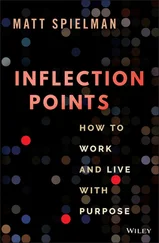“We are independent and we will stand on our own two feet,” he said, “but we need your help. The most common question I hear from my ministers and others in Afghanistan is whether the United States will continue to work with us.”
I assured Karzai that he could count on America as a partner, and that we would not abandon his country again. We talked about the hunt for the remaining Taliban and al Qaeda operatives, the need to train an Afghan army and police force, and the importance of constructing roads, health clinics, and schools.
The next night, I saw Karzai again, in the House of Representatives for my State of the Union address. Laura sat next to him. One row back was Karzai’s vice chairman—and Afghanistan’s new minister of women’s affairs—Dr. Sima Samar.

Karzai’s immediate task was to show that life would improve with the Taliban gone. To support him, I sent Zalmay Khalilzad, a talented Afghan American on the National Security Council staff, to serve as my special envoy and, later, as American ambassador. Zal and Karzai used hundreds of millions of dollars in American aid to build infrastructure, train teachers, print textbooks, and extend electricity and clean water to Afghanistan’s rural population. One program funded by the U.S. Agency for International Development, USAID, helped more than three million Afghan children return to school. That was three times the number who had attended under the Taliban. About a million of the new students were girls.
From the beginning, we sought to bring as many nations as possible into the rebuilding effort. A multilateral approach would defray the financial burden and invest nations around the world in the ideological struggle against extremists. Prime Minister Junichiro Koizumi of Japan hosted an international donors’ conference in January 2002. The Tokyo meeting yielded $4.5 billion in pledges. America and several key allies decided to divvy up responsibility for helping to build Afghan civil society. We took the lead in training a new Afghan National Army. Germany focused on training the national police. Great Britain adopted a counternarcotics mission. Italy worked to reform the justice system. Japan launched an initiative to disarm and demobilize warlords and their militias.
Basic security was a necessary precondition for political and economic gains. So as part of the Bonn process, we supported the creation of an International Security Assistance Force, known as ISAF, under the auspices of the United Nations. In the fall of 2002, NATO agreed to take command of ISAF, which contained nearly five thousand troops from twenty-two countries. We also had eight thousand American troops under the command of Tommy Franks training the Afghan security forces and conducting operations against the remnants of al Qaeda and the Taliban.
At the time, thirteen thousand troops seemed like the right amount. We had routed the Taliban with far fewer, and it seemed that the enemy was on the run. I agreed with our military leaders that we did not need a larger presence. We were all wary of repeating the experience of the Soviets and the British, who ended up looking like occupiers.
This strategy worked well at first. But in retrospect, our rapid success with low troop levels created false comfort, and our desire to maintain a light military footprint left us short of the resources we needed. It would take several years for these shortcomings to become clear.

In June 2002, Afghans gathered for a second loya jirga to select a transitional government. This time security was good enough to host the conference in Kabul. The delegates chose Karzai to head the new government, and he appointed cabinet ministers from a variety of ethnic and religious backgrounds. I made it a priority to check in regularly with Karzai. I knew he had a daunting task, and I wanted to lift his spirits and assure him of our commitment. I offered advice and made requests, but I was careful not to give him orders. The best way to help him grow as a leader was to treat him like one.
The young government made progress. In September 2003, President Karzai told me that pay for the average Afghan had increased from one dollar to three dollars a day—a major improvement, but also a reminder of how primitive the country remained. The government’s biggest accomplishment was drafting a new constitution, which was ratified by a third loya jirga in January 2004. A country that three years earlier had forced women to paint the windows of their homes black now protected basic rights such as freedom of speech and assembly. The constitution established an independent judiciary and bicameral legislature, and it mandated that women account for 25 percent of the House of the People.
The next step was to hold the first free presidential election in Afghanistan’s history, which was scheduled for October 9, 2004. The Taliban and al Qaeda pledged to kill voters, candidates, and election officials. U.S., NATO, and UN officials helped train election workers and secure voting stations. I hoped the Afghan people would express their desire for liberty at the polls. In truth, nobody knew what to expect.
When dawn broke, the world witnessed an amazing sight. Across the country, Afghans had lined up overnight, eager to vote. At the front of the line outside the first polling station to open was a nineteen-year-old girl. “I cannot explain my feelings, just how happy I am,” she said. “I would never have thought I would be able to vote in this election.”
Across the country, turnout exceeded eight million, nearly 80 percent of the voting-age population. Every major ethnic and religious group participated, as did millions of women. The polls stayed open two extra hours to accommodate the huge crowds.
Condi gave me the news early in the morning in Missouri, where I’d debated John Kerry the night before. I was pleased with the results, but not surprised. I believe the human desire for freedom is universal. History shows that, when given the chance, people of every race and religion take extraordinary risks for liberty. In one village, a toothless man in a black turban said, “It is like independence day, or freedom day. We are bringing security and peace to this country.”
When the ballots were tallied, Hamid Karzai became the freely elected president. History has a way of dulling memories. But I will always remember the joy and pride I felt that first election day, when the people of Afghanistan—the land where 9/11 was conceived—cast their ballots for a future of freedom.

In September 2005, the Afghan people went to the polls again, this time to choose a national legislature. More than 2,700 candidates put their names forward for 249 seats. Nearly 7 million voters turned out, despite Taliban threats and calls for a boycott. The new National Assembly included 68 women and representatives of almost every ethnic group.
Dick Cheney represented the United States at the assembly’s inaugural session in December 2005. The ceremony opened with an emotional speech from the nation’s former king, ninety-one-year-old Zahir Shah. “I thank God that today I am participating in a ceremony that is a step towards rebuilding Afghanistan after decades of fighting,” he said. “The people of Afghanistan will succeed!”
I shared his optimism. Four years after the fall of the Taliban, the country had elected a president and a parliament. But I recognized the elections were only a first step. Democracy is a journey that requires a nation to build governing institutions such as courts of law, security forces, an education system, a free press, and a vibrant civil society. Afghanistan had made some hopeful progress. Some 5 million children, including 1.5 million girls, were back in school. The economy was growing at an average rate of more than 15 percent per year. A much-anticipated new highway from Kabul to Kandahar had been completed. Four million of 7 million refugees had returned home.
Читать дальше












